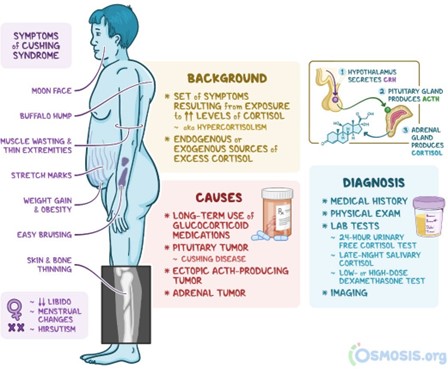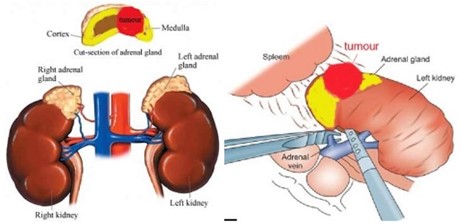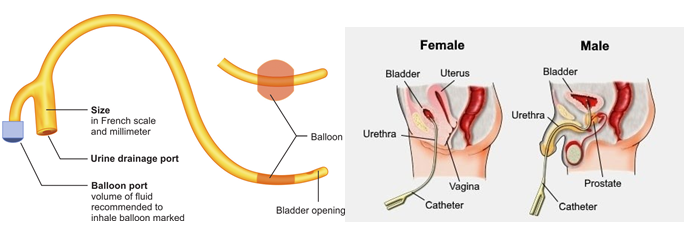A 98-year-old patient with benign prostatic hyperplasia has a markedly distended bladder and is agitated and confused. All the following orders are received from the emergency department health care provider. Which order should the nurse act on first?
Schedule for IVP.
Draw blood for blood urea nitrogen (BUN) and creatinine.
Insert 16 French retention catheter.
Administer lorazepam (Ativan) 0.5 mg.
The Correct Answer is C
The nurse should act on the order to insert a 16 French retention catheter first. The patient's markedly distended bladder and agitated and confused state suggest acute urinary retention, which can be relieved by inserting a catheter to drain the urine. This is a priority intervention as urinary retention can lead to serious complications such as bladder rupture, hydronephrosis, and renal failure. Once the catheter is inserted and the patient's bladder is drained, the healthcare provider can order further tests such as an IVP or blood tests to assess renal function. The order for lorazepam can be addressed after the catheter is inserted and the patient's urinary retention is addressed.
Nursing Test Bank
Naxlex Comprehensive Predictor Exams
Related Questions
Correct Answer is B
Explanation
This response acknowledges the patient's concerns and provides reassurance that the changes are temporary and will improve after surgery. Response is dismissive of the patient's concerns and may make the patient feel unheard. Response c may be helpful, but it does not address the patient's emotional concerns. Response d is not accurate because the patient has expressed feeling awful about their appearance.


Correct Answer is A
Explanation
Kegel exercises are designed to strengthen the pelvic floor muscles, which can help improve urinary incontinence. By teaching the patient how to perform Kegel exercises, the nurse can provide a non-invasive, effective intervention that the patient can perform on her own to help manage her urinary incontinence.
Assisting the patient to the bathroom q3hr (b) may help reduce the frequency of incontinence episodes but it does not address the underlying issue of weakened pelvic floor muscles.
Demonstrating how to perform Crede’s maneuver (c) involves applying manual pressure to the bladder to assist with urination and is not appropriate for managing urinary incontinence related to laughing or coughing.
Placing a commode at the patient’s bedside (d) may be appropriate for patients who have difficulty with mobility or accessing the bathroom, but it does not address the underlying issue of weakened pelvic floor muscles causing urinary incontinence.


Whether you are a student looking to ace your exams or a practicing nurse seeking to enhance your expertise , our nursing education contents will empower you with the confidence and competence to make a difference in the lives of patients and become a respected leader in the healthcare field.
Visit Naxlex, invest in your future and unlock endless possibilities with our unparalleled nursing education contents today
Report Wrong Answer on the Current Question
Do you disagree with the answer? If yes, what is your expected answer? Explain.
Kindly be descriptive with the issue you are facing.

